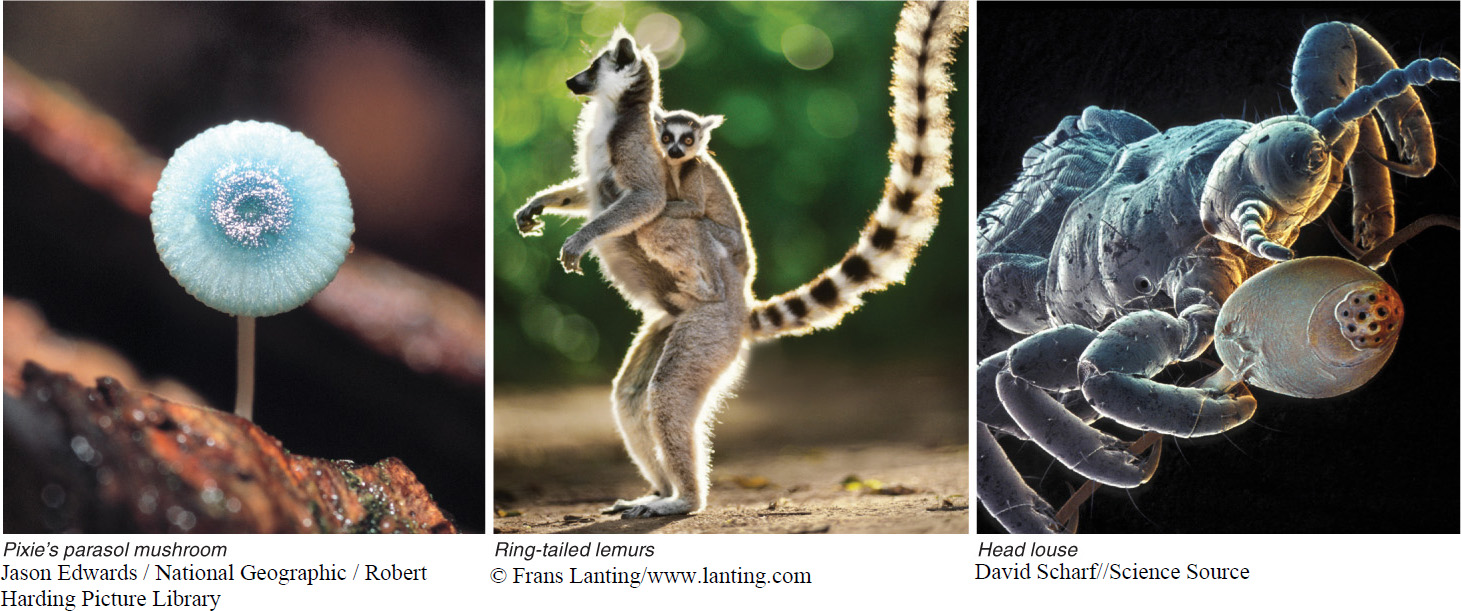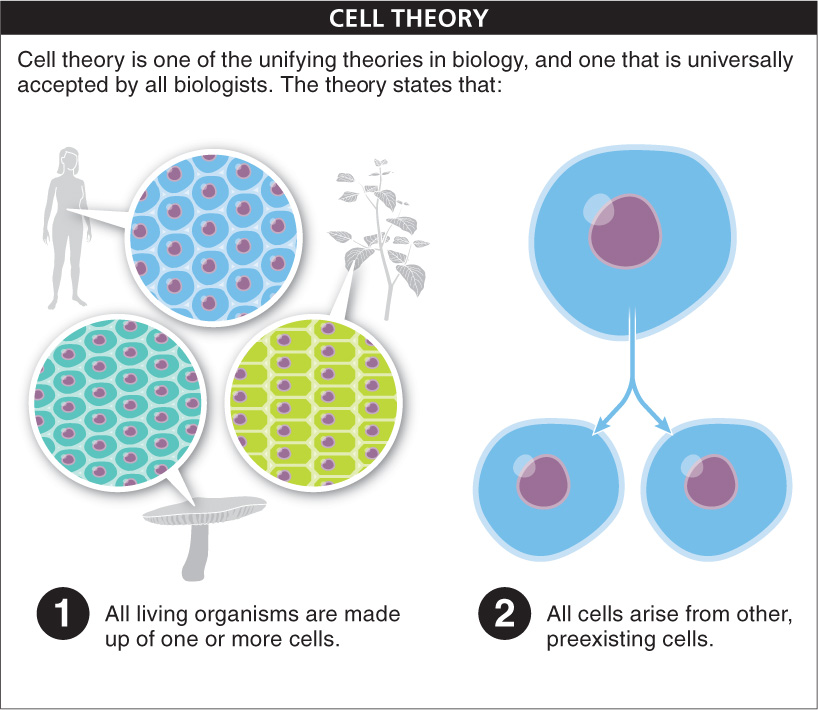3.1–3.3: What is a cell?

Where do we begin if we want to understand how organisms work? Given their complexity, this task can be daunting. Whether we are studying a creature as small as a flea or as large as an elephant or giant sequoia, all organisms are made of smaller units that are more easily studied and understood (FIGURE 3-1). The most basic unit of any organism is the cell, the smallest unit of life that can function independently and perform all the necessary functions of life. Understanding cell structure and function is the basis for our understanding of how complex organisms are organized.

The term “cell” was first used in the mid-
After sufficient improvements were made to early microscopes in the 19th century, the central role of the cell in biology could be understood. By the 1830s, scientists realized that all plants and animals were made entirely from cells. Subsequent studies revealed that every cell seemed to arise from the division of another cell. You, for example, are made up of at least 60 trillion cells, all of which came from just one cell: the single fertilized egg produced when an egg cell from your mother was fertilized by a sperm cell from your father.
87
The facts that (1) all living organisms are made up of one or more cells and (2) all cells arise from other, preexisting living cells are the foundations of cell theory, one of the unifying theories in biology, and one that is universally accepted by all biologists (FIGURE 3-2). As we see in Chapter 10, the origin of life on earth was a one-
Q
Question 3.1
Aristotle wrote that “living things form quickly whenever… air and… heat are enclosed in anything.” Why is he wrong?

Today, we know that the cell is a three-
To see a cell, you don’t have to work in a lab or use a microscope. Just open your refrigerator. Chances are you’ve got a dozen or so visible cells in there: eggs. Although most cells are too small to see with the naked eye, there are a few exceptions, including hens’ eggs from the supermarket. As long as they are unfertilized, which most store-
In addition to being among the largest cells around, eggs are also the most valuable. Almas caviar, eggs from the beluga sturgeon, sells for nearly $700 per ounce. This value is exceeded only by that of human eggs, which currently fetch as much as $25,000 for a dozen or so eggs on the open market (FIGURE 3-3). (Human sperm cells command only about a penny per 20,000 cells!)

88
Most cells are much smaller than hens’ eggs and ostrich eggs. Consider that, at this very moment, there are probably more than seven billion bacteria in your mouth—
In this chapter, we investigate the two different kinds of cells that make up all of the organisms on earth, the processes by which cells control how materials move into and out of the cell, and how cells communicate with each other. We also explore some of the important structures found in many cells and the specialized roles these structures play in a variety of cellular functions. Along the way, we learn about some of the health consequences when cells malfunction.
TAKE-HOME MESSAGE 3.1
The most basic unit of any organism is the cell, the smallest unit of life that can function independently and perform all of the necessary functions of life, including reproducing itself. All living organisms are made up of one or more cells, and all cells arise from other, preexisting cells.
What two facts form the foundation of cell theory?
89